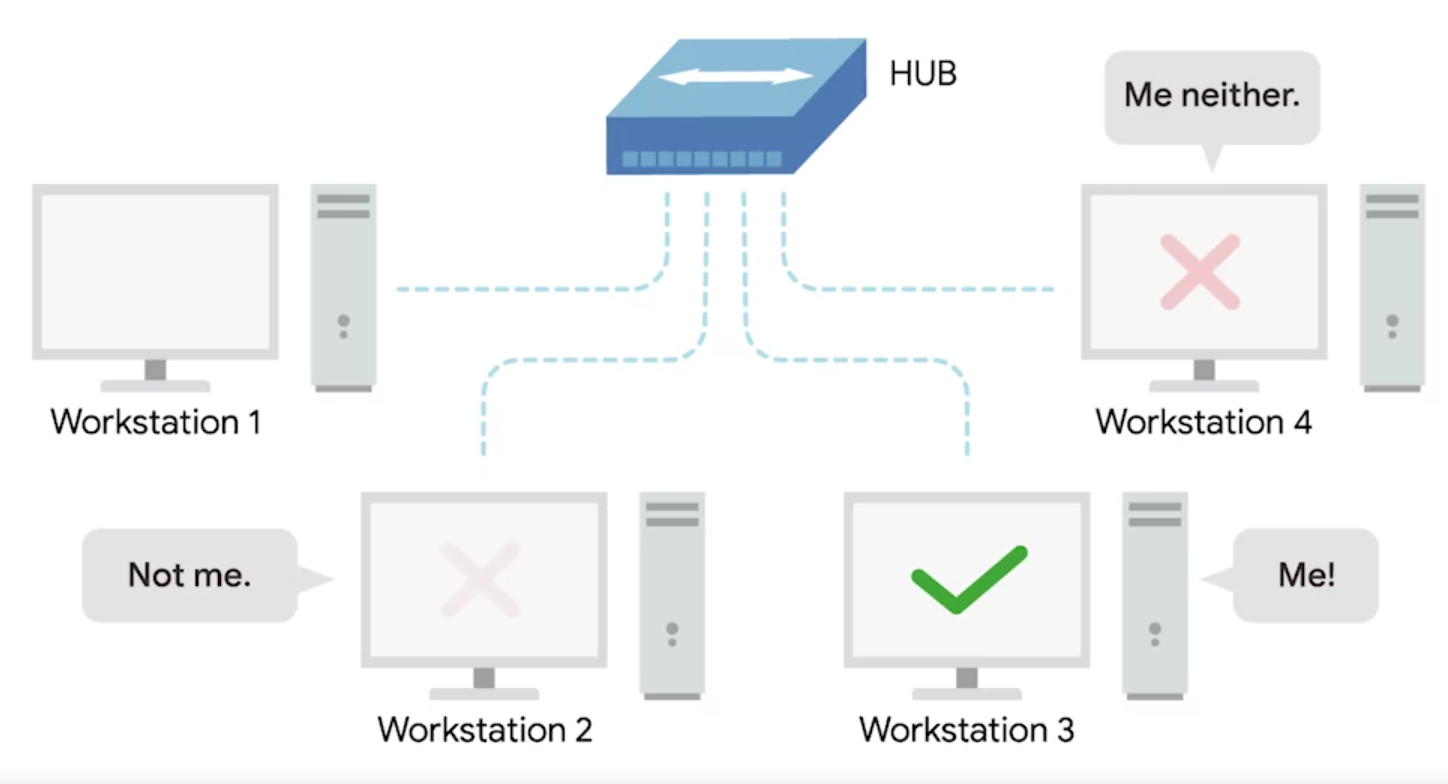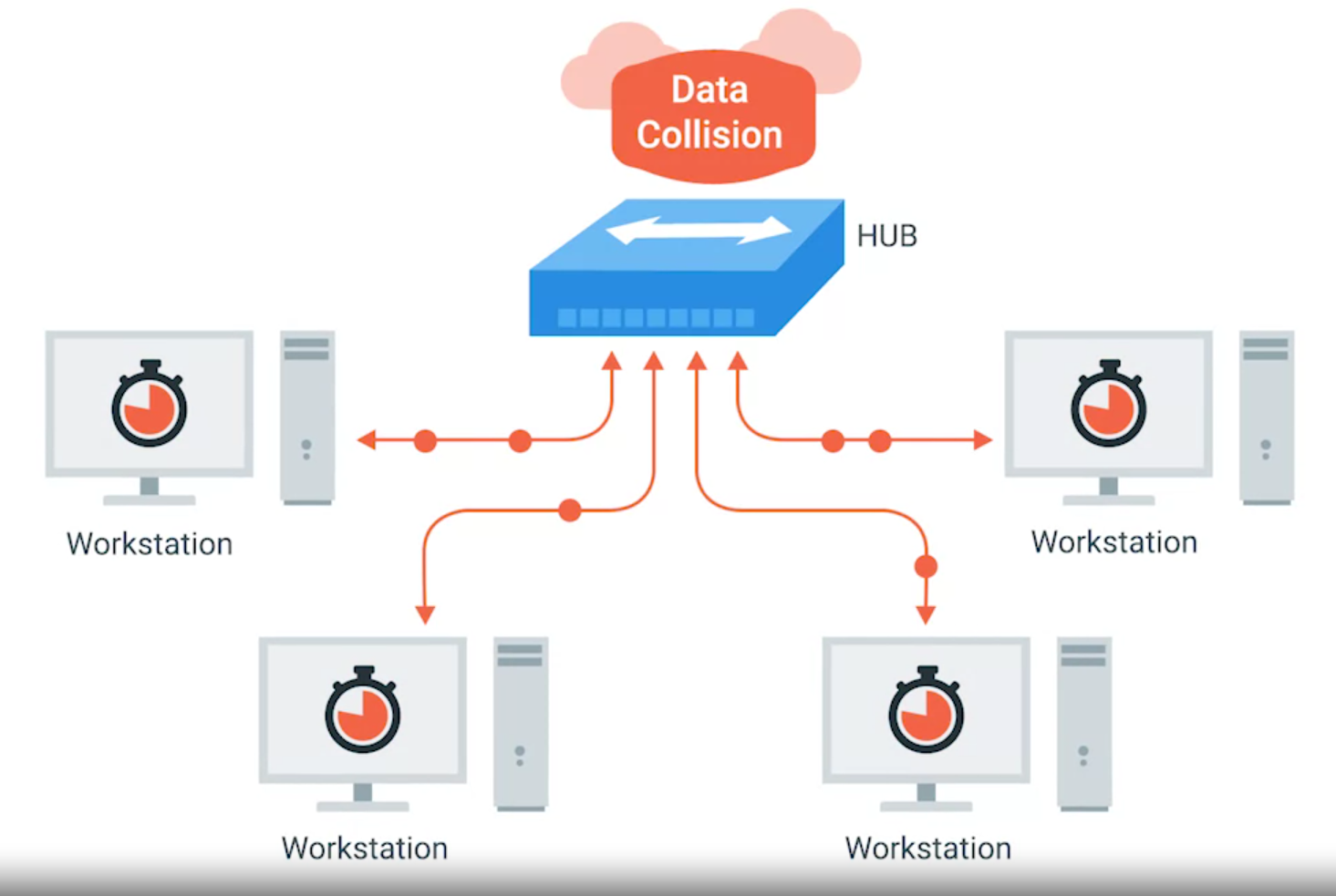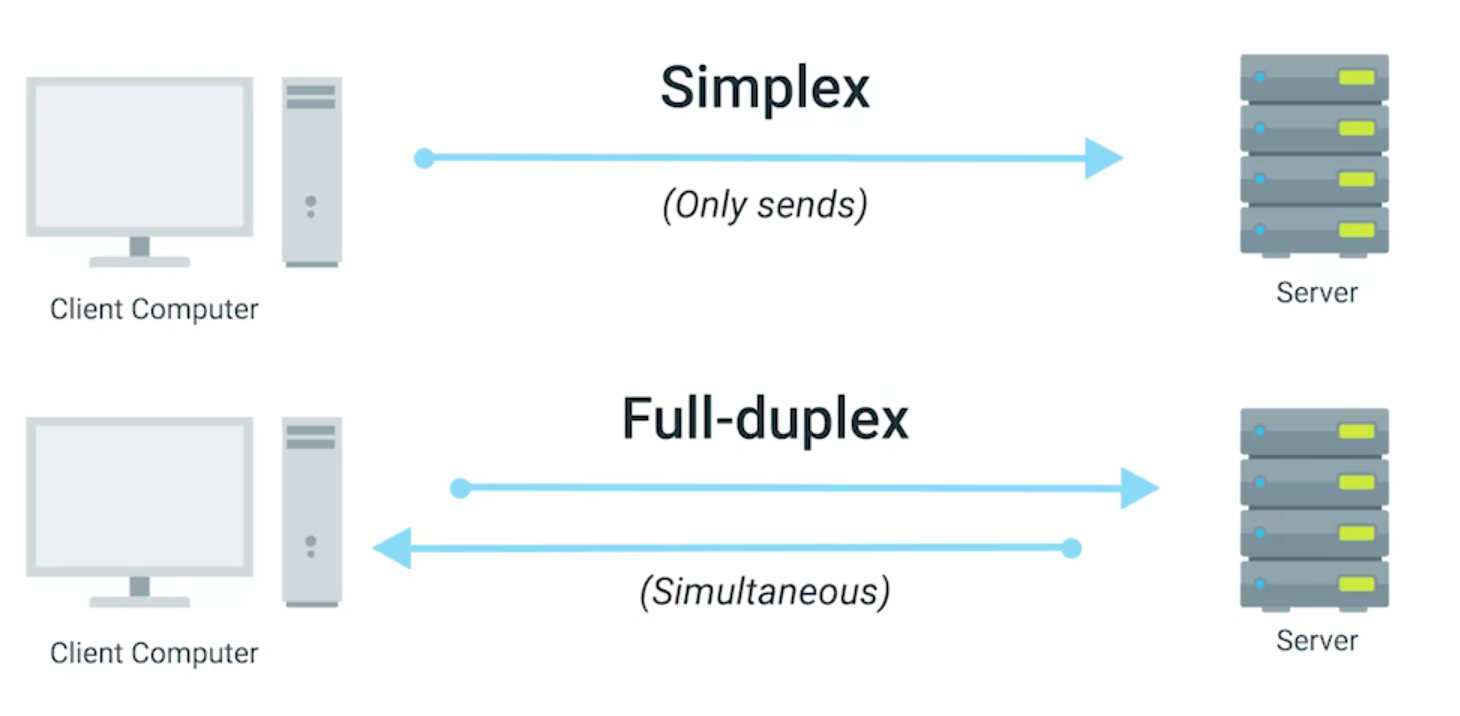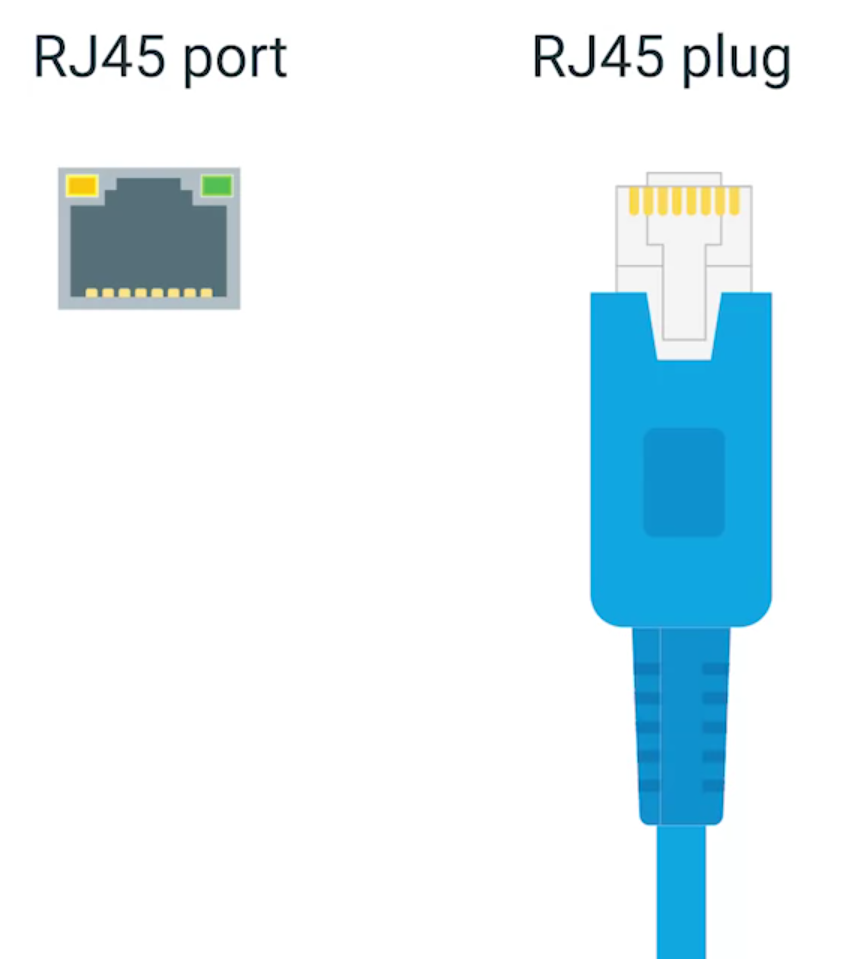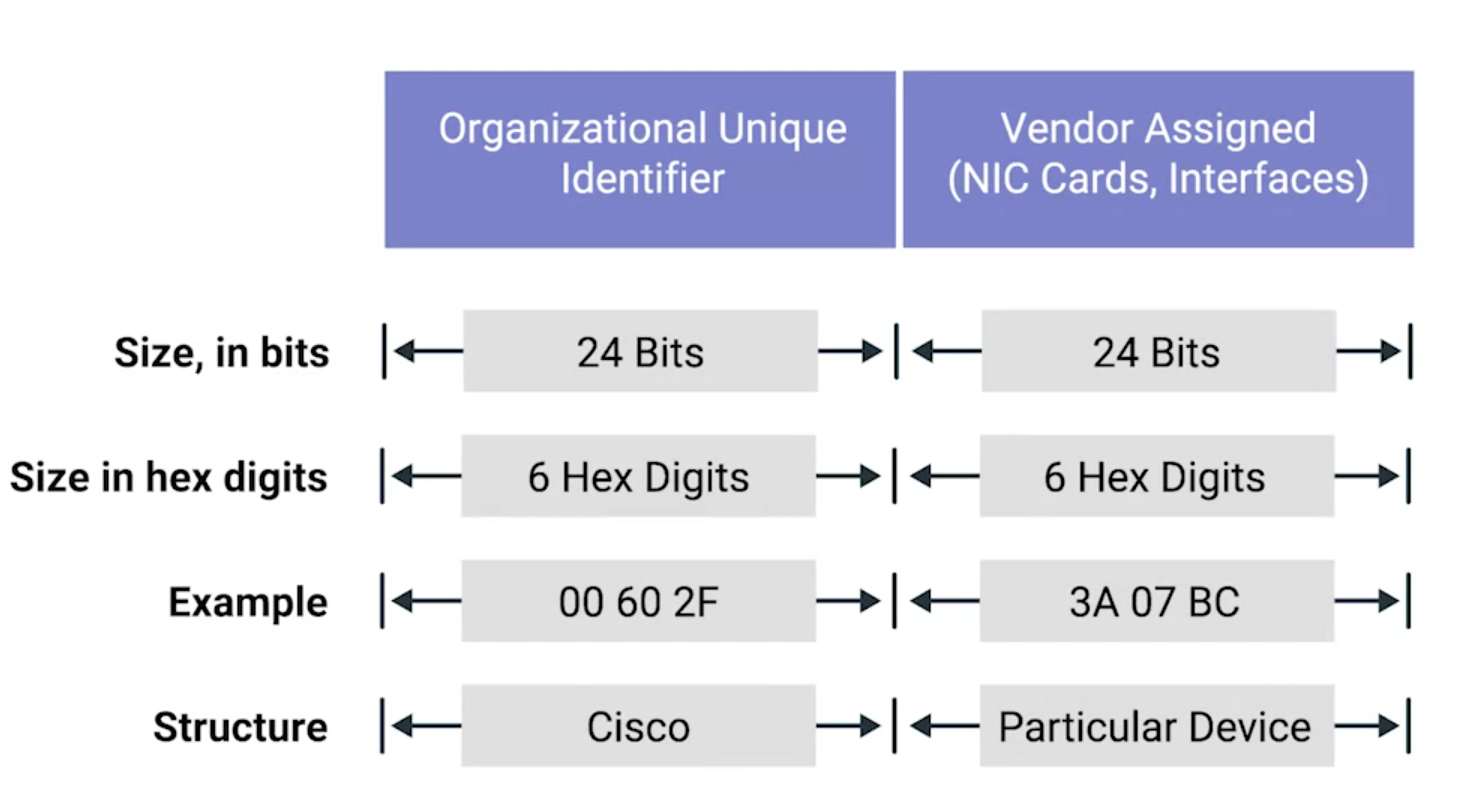Introduction to Networking
What is Networking?
Basics of Networking
Network
An interconnection of Computers.
The Internet
The physical connection of computers and wires around the world.
The Web
The information present on the Internet.
Networking
In an IT field, managing, building, and designing networks.
Networking Hardware
- Ethernet Cables
- Wi-Fi
- Fiber Optics
- Router
- ISP Network
- Switches and Hubs
Network Stack
A set of hardware or software that provides the infrastructure for a computer.
Language of the Internet
IP
Delivers packets to right computers.
TCP
Delivers information from one network to another.
The Web
- URL
- Domain Name (registered with ICANN: internet corporation for assigned names and numbers)
- DNS
Limitations of the Internet
History of the Internet
- 1960s DARPA project introduced with the earliest form of Internet called ARPANET.
- 1970s invention of TCP/IP made possible the interconnection of computers and different networks.
- 1990s was the start of World Wide Web (WWW).
Limitations of the Internet
- IPV4 addresses are limited, only >4 billion.
- IPV6 addresses solve this problem with 2128 addresses, but adaptation is slow and expensive.
Network Address Translation (NAT)
Lets an organization use one public IP address and many private IP addresses within the network.
Impact of the Internet
Globalization
The movement that lets governments, businesses, and organizations communicate and integrate together on an international scale.
Internet of Things (IOT)
Smart devices like thermostat, refrigerators, and other home appliances as well as every day smart devices which are being connected to the internet thanks to the IOT.
Privacy and Security
- GDPR (General Data Protection Regulation)
- COPPA (Children Online Privacy Protection Act)
- Copyright Laws
Introduction to Computer Networking
Protocol
A defined set of standards that computers must follow in order to communicate properly.
Computer Networking
The name we’ve given to the full scope of how computer communicate with each other.
- TCP/IP five layered network model
The Basics of Networking Devices
Cables
“Connect different devices to each other, allowing data to be transmitted over them.”
- Copper Cables
- Change voltage to get binary data
- The most common forms of copper twisted-pair cables used in networking are Cat5, Cat5e, and Cat6 cables
Crosstalk: “When an electrical pulse on one wire is accidentally detected on another wire.”
- Fiber Optic Cables
Contain individual optical fibers, which are tiny tubes made out of glass about the width of a human hair.
- Unlike copper cables, fibers use light pulses to send 1s and 0s
Hubs and Switches
Hub
A physical layer device that allows for connections from many computers at once.
- Layer 1 device
- Collision domain: A network segment where only one device can communicate at a time.
If multiple systems try sending data at the same time, the electrical pulses sent across the cable can interfere with each other.
Network Switch
- Layer 2 device
- Can direct traffic to a particular node on network, so reduces Collision Domain
Routers
- The primary devices used to connect computers on a single network, usually referred to as a LAN or local area network
A device that knows how to forward data between independent networks
- Layer 3 (network) device
- Core ISP routers (More complex than home routers) form the backbone of the internet.
Servers and Clients
Server Provide data to some client, requesting it
- Vague definition, as individual programs running on the computer can also act a server
The TCP/IP Five-Layer Network Model
1) Physical Layer
Represents the physical devices that interconnect computers.
- 10 Base T, 802.11
- Bits
The smallest representation of data that a computer can understand; it’s a one or zero
1s and 0s are sent across the network using modulation
Modulation: A way of varying the voltage of charge moving across the cables
- When using modulation in computer networks, it’s called Line coding
Twisted-Pair Cabling and Duplexing
- Most common
- Twisted-Pair to avoid interference & crosstalk
Duplex Communication: The concept that information can flow in both directions across the globe
Simplex Communication: This is unidirectional
Network Ports and Patch Panels
- Twisted-Pair Cables end with the plug which takes the wires and act as a connector
The most common plug RJ45
Network Ports: They are generally directly attached to the devices that make up a computer network
Most network ports have two small LEDs
Activity LED: Would flash when data actively transmitted across the cable
Link LED: Lit when cable properly connected to two devices that are both powered on
Sometimes a network port isn’t connected directly to a device. Instead, there might be network ports mounted on a wall or underneath your desk. These ports are generally connected to the network via cables, run through the walls, that eventually end at a patch panel.
Patch Panel: A device containing many network ports. But it does no other work.
2) Data Link Layer
Responsible for defining a common way of interpreting these signals so network devices can communicate.
- Ethernet: The Ethernet standards also define a protocol responsible for getting data to nodes on the same network.
- WI-FI
- Frames
- Mac-Address
Ethernet and MAC Addresses
- Ethernet is the most common means of sending data
Ethernet solves Collision domain by using a technique known as carrier sense multiple access with collision detection (CSMA/CD).
CSMA/CD: Used to determine when the communications channels are clear, and when device is free to transmit data
MAC Address: A globally unique identifier attached to an individual network interface
- It’s a 48- bit number normally represented by six groupings of two hexadecimal numbers
- Hexadecimal: A way to represent numbers using 16 digits
- Another way to represent MAC Address is Octet
- Octet: In computer networking, any number can be represented by 8 bits
- MAC-Address is split in two categories
1) Organizationally Unique Identifier(OUI): The first three octets of a MAC address
2) Vendor Assigned(NIC Cards, Interfaces): Last three octets are assigned by the vendor, depending upon their preferences.
- Ethernet uses MAC addresses to ensure that the data it sends has both an address for the machine that sent the transmission, and the one the transmission was intended for.
Uni-cast, Multicast and Broadcast
- Uni-cast
A uni-cast transmission is always meant for just one receiving address
- It’s done by looking at a specific bit in the destination MAC address
- If the least significant bit in the first octet of a destination address is set to zero, it means that an Ethernet frame is intended for only the destination address.
- If the least significant bit in the first octet of a destination address is set to one, it means you’re dealing with a Multicast frame.
Broadcast
An Ethernet Broadcast is sent to every single device on a LAN
- This is accomplished by a special address known as Broadcast address
- Ethernet broadcast are used, so devices can learn more about each other
- Ethernet broadcast address used is
FF:FF:FF:FF:FF:FF:FF
Dissecting an Ethernet Frame
Data Packet
An all-encompassing term that represents any single set of binary data being sent across a network link
Ethernet Frame
A highly structured collection of information presented in a specific order
- The first part of an Ethernet frame is called a preamble.
Preamble: 8 bytes (or 64 bits) long, and can itself split into two sections
- Preamble can split into two part of 1 byte of series of 1s and 0s
- Last frame in preamble is called Start frame delimiter (SFD)
Signals to a receiving device that the preamble is over and that the actual frame contents will now follow
- Next is Destination MAC address
The hardware address of the intended recipient
- Followed by Source Address
- The next part of Ethernet Frame is EtherType field
16 bits long and used to describe the protocol of the contents of the frame
- WE can use VLAN header in place of EtherType field
Indicates that the frame itself is what’s called a VLAN frame
- If a VLAN header is present, the EtherType field follows it.
Virtual LAN (VLAN): A technique that lets you have multiple logical LANs operating on the same physical equipment
- VLANs, use to segregate different type of network traffic
- The next part of Ether frame is payload
In networking terms, is the actual data being transported, which is everything that isn’t a header.
- Following payload is, Frame Check Sequence (FCS)
A 4-byte (or 32-bit) number that represents a checksum value for the entire frame
- This checksum value is calculated by performing what’s known as a cyclical redundancy check against the frame.
Cyclic Redundancy Check (CRC): An important concept for data integrity, and is used all over computing, not just network transmissions
3) Network Layer
Allows different networks to communicate with each other through devices known as routers.
- IP: IP is the heart of the Internet and smaller networks around the world.
- Datagram
- IP Address
Inter-network
A collection of networks connected together through routers, the most famous of these being the Internet.
4) Transport Layer
Sorts out which client and server programs are supposed to get that data.
- TCP/UDP
- Segment
- Ports
5) Application Layer
There are lots of different protocols at this layer, and as you might have guessed from the name, they are application-specific. Protocols used to allow you to browse the web or send, receive email are some common ones.
- HTTP, SMTP etc.
- Messages


